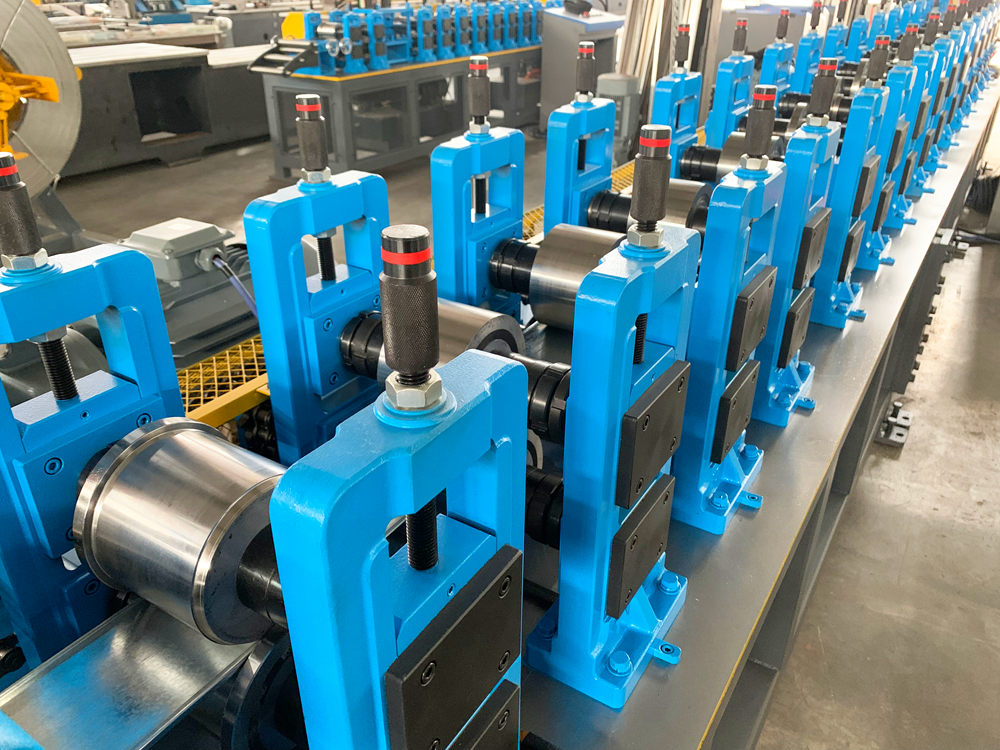
The Evolution of Cable Tray Production Lines Enhancing Efficiency in Industrial Applications
In today's rapidly advancing industrial landscape, the importance of efficient manufacturing processes cannot be overstated. One significant aspect of this efficiency is the production of cable trays, crucial components in electrical and telecommunications installations. As industries continue to grow, the demand for high-quality cable trays has led to the evolution of specialized production lines designed to meet these needs.
Understanding Cable Trays
Cable trays serve as support systems for electrical cables, providing secure pathways that facilitate cable management and organization within buildings and structures. They are integral in commercial and industrial sectors, offering distinct advantages in terms of safety, ease of maintenance, and reduction of installation time. With the increasing complexity of electrical systems, it is essential for manufacturers to develop robust and reliable cable tray systems.
Components of a Cable Tray Production Line
A modern cable tray production line typically consists of several key components that work in unison to ensure efficiency and quality. The primary stages of the production process include raw material handling, cutting, forming, welding, finishing, and quality assurance. Each of these stages is equipped with specialized machinery designed to optimize performance
1. Raw Material Handling The production process begins with the procurement of suitable raw materials, usually steel or aluminum, that are selected based on their strength, durability, and corrosion resistance. Advanced inventory management systems are employed to track and manage these materials effectively.
2. Cutting Once the raw materials are ready, they are fed into cutting machines that precisely size them according to the required dimensions for the cable trays. This stage is crucial for ensuring consistency and reducing wastage.
3. Forming After cutting, the pieces are shaped into the desired profile using forming machines. This may involve rolling, bending, or pressing methods, all of which are designed to achieve the right structural integrity.

4. Welding The formed components then enter the welding phase, where they are joined together to create robust cable tray units. Automated welding systems are becoming increasingly common, enhancing the speed and precision of this process while minimizing human error.
5. Finishing Post-welding, cable trays undergo various finishing processes including surface treatments such as galvanization or powder coating. These processes not only improve aesthetic appeal but also enhance the trays’ resistance to environmental factors, ensuring longevity.
6. Quality Assurance The final stage involves rigorous testing and inspection to ensure that the finished products meet industry standards and customer specifications. Quality assurance is an ongoing process within the production line, involving checkpoints at every stage to catch any defects early.
Technological Advancements
With the advent of Industry 4.0, cable tray production lines are also evolving through the integration of smart technologies. Automation and robotics are streamlining production, reducing labor costs and human error. Furthermore, real-time data analytics allows manufacturers to optimize their processes, monitor equipment performance, and predict maintenance needs before breakdowns occur. This predictive maintenance approach enhances operational efficiency and minimizes downtime.
Environmental Considerations
As industries grow increasingly aware of their environmental responsibilities, cable tray production lines are adapting to incorporate sustainability practices. Many manufacturers are investing in eco-friendly materials and energy-efficient processes, aiming to reduce their carbon footprint. Recycling initiatives for metal scraps and the use of environmentally safe coatings are some examples of how producers are striving for sustainability.
Conclusion
The evolution of cable tray production lines reflects the broader trends in manufacturing towards efficiency, automation, and sustainability. By harnessing advanced technologies and adhering to strict quality standards, manufacturers can meet the rising demand for reliable cable management solutions in various industries. As we move forward, these production lines will play an essential role in supporting the infrastructure of our increasingly interconnected world, ensuring that electrical and telecommunications systems remain effective and safe. The future of cable tray production is not just about increasing output; it is about providing high-quality products that meet the diverse needs of a rapidly changing industrial environment.